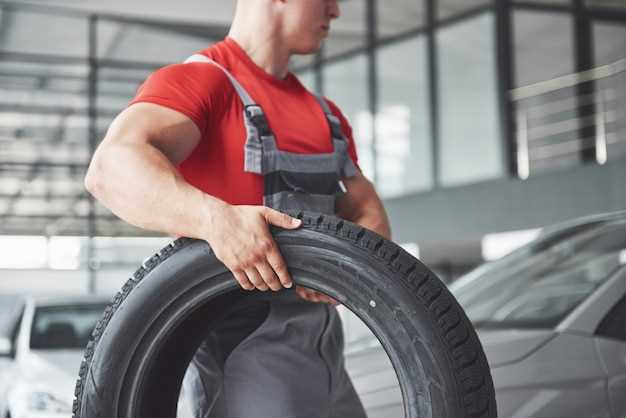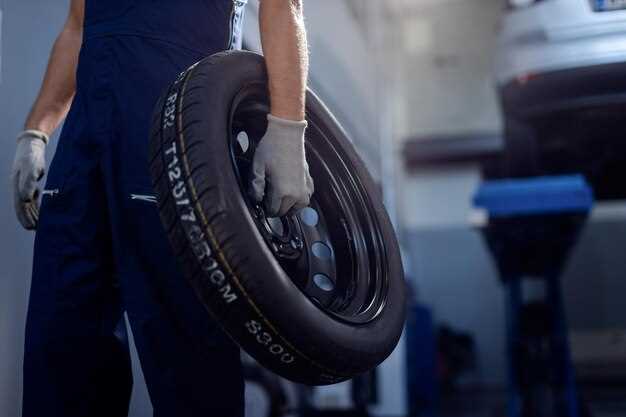For drivers prioritizing safety and peace of mind, opting for run-flat tires can be a wise choice. These tires excel in providing enhanced safety by allowing you to continue driving after a puncture, negating the immediate need for a roadside tire change. With run-flat technology, you can travel a certain distance at a reduced speed, ensuring you reach a secure location or service station for a full tire replacement.
An advantage of run-flat tires is the ability to maintain vehicle control during sudden air pressure loss. This feature significantly reduces the risk of accidents on high-speed roads. When the tire is punctured, its reinforced sidewalls minimize the likelihood of tire deflation, allowing for a smoother and more controlled ride to safety. The ability to continue driving after a puncture gives drivers time and flexibility to plan their next steps without the typical stress of an unexpected tire failure.
Moreover, run-flat tires contribute to vehicle efficiency by eliminating the need for a spare tire and tools, thereby freeing up valuable trunk space and reducing vehicle weight. This can lead to improved fuel efficiency and better vehicle handling. Drivers who appreciate convenience will find these tires particularly beneficial during long trips or in areas with sparse service facilities, where the availability of immediate support may be limited.
Advantages of Run-Flat Tires

Choose run-flat tires for increased safety and convenience during unexpected punctures. These tires allow you to continue driving for a limited distance after a puncture, typically up to 50 miles at reduced speeds, providing ample time to reach a repair shop. This capability eliminates the immediate need to change a tire in potentially unsafe locations like busy highways.
Enjoy the freedom from carrying a spare tire and related tools. This reduction in weight can contribute to improved fuel efficiency. Additionally, your vehicle’s trunk gains extra space, which could be used for luggage or other important items.
Run-flat tires often come built with reinforced sidewalls. This feature enhances stability and handling, ensuring a safer and more controlled ride, even during rapid air loss. Your driving experience remains uninterrupted, maintaining peace of mind on long journeys.
Invest in this technology for durability and longevity. Run-flat tires usually boast robust construction, often resulting in extended wear and a longer lifespan. Regular maintenance and checks can further enhance their mileage, ensuring you get the most out of your investment.
Enhanced Safety Features of Run-Flat Technology
Choose run-flat tires to maximize safety on the road. These tires offer stability even after a puncture, allowing drivers to maintain control and avoid dangerous roadside stops.
- Extended Mobility: Run-flat tires ensure continued travel up to 50 miles at a speed of 50 mph after a puncture, providing ample time to reach a repair shop.
- Improved Control: Reinforced sidewalls prevent the tire from collapsing under the vehicle’s weight, maintaining vehicle stability and steering capability.
- Elimination of Immediate Tire Changes: No more roadside tire changes, reducing the risk of accidents from vehicles passing at high speeds.
- Enhanced Pressure Monitoring: Integrated Tire Pressure Monitoring Systems (TPMS) are often included, alerting drivers to pressure changes and enabling timely maintenance.
- Structural Integrity: Run-flats are built with a thicker, heat-resistant rubber compound that minimizes the risk of blowouts, thanks to their durable construction.
- Prevention of Secondary Damage: By keeping the tire in shape, run-flats protect the wheel rim and suspension from damage that can occur with normal tires after a puncture.
Investing in run-flat technology means prioritizing personal safety and peace of mind, transforming what might have been a precarious situation into a manageable one.
Impact on Vehicle Handling and Control
Select run-flat tires for enhanced vehicle stability, particularly during unexpected deflation. Their reinforced sidewalls help maintain structural integrity, enabling better control in sudden air loss scenarios. Drivers often experience improved command of the vehicle, minimizing risk during tire failure.
Another benefit lies in steering precision. Run-flat tires support balanced handling, reducing the tendency for oversteer or understeer. This can lead to improved cornering and more responsive directional changes.
Consider the trade-offs, as run-flat tires can have a firmer ride due to their stiffness. This might affect your comfort slightly, but the enhanced safety often compensates for this aspect. Attention to tire pressure and regular checks ensure that run-flat tires perform optimally, preserving their advantages.
Below is a simple comparison highlighting their effect on handling:
| Aspect | With Run-Flat Tires | With Standard Tires |
|---|---|---|
| Control during Deflation | Maintained | Compromised |
| Steering Precision | Higher | Variable |
| Ride Comfort | Slightly Reduced | Optimal |
Ultimately, balancing comfort, safety, and control, run-flat tires offer distinct benefits, especially under pressure. Regular maintenance further extends these advantages, ensuring you experience the full potential of their design.
Convenience Offered by Puncture Resistance
Choose run-flat tires for hassle-free traveling even after a puncture. The robust design prevents immediate deflation, allowing you to drive up to 50 miles at a reduced speed of 50 mph. This feature negates the need to change the tire immediately, making your journey stress-free and safe.
- No Need for Immediate Repairs: Simply drive to the nearest service station without the pressure of an instant fix.
- Uninterrupted Schedules: Maintain your plans without delay, as these tires support your mobility after a puncture.
- Easier Handling and Control: The reinforced sidewalls stabilize the vehicle, providing better handling even when a tire loses air.
Invest in run-flat tires to enjoy peace of mind and enhanced safety, knowing you can handle unexpected punctures with ease and convenience.
Considerations and Drawbacks of Run-Flat Tires

Before deciding to buy run-flat tires, evaluate their impact on ride comfort. These tires are known for a firmer ride because of reinforced sidewalls, which can reduce overall comfort on uneven surfaces. This firmness may lead to increased cabin noise, particularly on rough roads.
Keep in mind the potential cost implications. Run-flat tires can be more expensive than regular tires and may have a shorter lifespan due to the tougher rubber compounds used. This often results in more frequent replacements, leading to higher long-term expenses.
Another factor to consider is the impact on fuel efficiency. Run-flat tires often weigh more due to additional materials, slightly reducing fuel economy over time. Although it might not seem significant, over long distances or for frequent drivers, this can add up.
Moreover, availability can be an issue. Not every tire shop stocks run-flat tires, especially in remote locations. It’s wise to ensure that your preferred tire shop can supply replacements when needed.
Lastly, while run-flat tires allow you to drive to a service station without immediate repair, they typically limit speeds to around 50 mph and allow driving for only about 50 miles. This limitation means you should plan a tire replacement or repair promptly to avoid further complications.
Comparison of Cost Between Run-Flat and Conventional Tires
Choose conventional tires if immediate savings are your priority, as they typically cost 10-50% less per tire compared to run-flat options. Conventional tires generally have a lower upfront cost–often ranging from $60 to $120 per tire–whereas run-flat tires can range from $100 to $250 per tire on average.
However, investing in run-flat tires can reduce long-term expenses associated with emergencies. With their ability to function even when punctured, run-flat tires eliminate the need for immediate roadside assistance and spare tire purchases, potentially saving $50 to $100 each occurrence in towing fees alone.
Consider the lifespan. Run-flat tires often wear faster than conventional ones, leading to more frequent replacements–typically every 25,000 to 30,000 miles compared to 40,000 to 60,000 miles for standard tires. Balance these increased longevity costs with run-flats’ benefits, such as improved safety and convenience during a puncture scenario. Evaluating your driving environment, risk aversion, and maintenance habits will guide you to the most cost-effective solution for your needs.
Availability and Compatibility with Various Vehicles
Opt for run-flat tires that are readily available from many major tire manufacturers, ensuring easy access for vehicle owners. These tires are compatible with a range of vehicle types, from sedans to SUVs. Key factors to consider for compatibility include:
- Vehicle Specifications: Check your vehicle’s manual or consult with a professional to confirm that your car supports run-flat tires. They are typically designed for vehicles equipped with a Tire Pressure Monitoring System (TPMS).
- Size and Type: Ensure the run-flat tire matches your current tire size and type. The sidewall should have the same dimensions to maintain performance and safety.
- Original Equipment Manufacturer (OEM) Options: Some manufacturers fit their new vehicles with run-flat tires as standard, which often means they have optimized other components, such as suspension, to complement the technology.
In cases where your vehicle was not originally fitted with run-flat tires, it might be beneficial to consult a tire specialist to discuss potential impacts on ride comfort and fuel efficiency. Ultimately, choosing run-flat tires can enhance your driving experience by allowing you to continue driving for a certain distance after a puncture without having to stop immediately for a replacement.
Influence on Ride Comfort and Noise Levels
Choose run-flat tires to improve your driving experience with the added benefit of enhanced convenience during a puncture. These tires generally provide a stiffer sidewall construction, contributing to improved stability at high speeds. This stiffness, however, can affect ride comfort as it tends to transmit more vibrations from the road surface compared to traditional tires. When selecting the right run-flat tire, consider the specific road conditions you frequently encounter, as certain models may offer technologies aimed at reducing this rigidity.
Noise levels could also be a consideration while using run-flat tires. The reinforced structure means there might be an increase in cabin noise, which varies across different brands and models. Some manufacturers use noise-reduction technologies or specific tread patterns to mitigate excessive sound. It’s beneficial to look for those options if road noise is a concern for you.
| Tire Feature | Effect on Comfort | Effect on Noise |
|---|---|---|
| Stiffer Sidewalls | Increased stability, reduced comfort | Potential increase in noise |
| Noise-Reduction Technologies | N/A | Decrease in noise levels |
| Specific Tread Patterns | Improved ride comfort with certain designs | Lower noise emissions |
Test driving vehicles equipped with different run-flat tire brands can offer firsthand insight into their comfort and noise performance. Ultimately, personal preferences and the usual driving environment play significant roles in choosing the best option for your needs. Checking user reviews and manufacturer specifications will further assist in making an informed decision. Take advantage of trial periods if available from retailers, ensuring satisfaction with your choice.
Expected Tread Life and Durability Concerns
Given the robust construction of run-flat tires, you can typically expect a tread life of around 50,000 to 60,000 miles, depending on driving habits and road conditions. While this lifespan is comparable to that of standard tires, it’s essential to conduct regular inspections for wear and alignment. This practice ensures longevity and optimal performance throughout the tire’s life.
Despite their resilience against complete flats, run-flat tires can sometimes provide a firmer ride due to their reinforced sidewalls. This rigidity can lead to an uneven tread wear pattern if the tire pressure is not consistently checked and maintained. A proactive approach involves monthly checks of tire pressure, as even minor pressure deviations can impact tread wear significantly.
If you encounter frequent potholes or rough road surfaces, it’s advisable to periodically rotate your tires every 5,000 to 7,000 miles. This rotation schedule helps distribute wear more evenly across all tires, extending their life. Additionally, alignment adjustments can counteract any side effects from the stiffness associated with run-flat technology.
When considering replacement, always choose a quality brand recognized for durability in run-flat design. Brands like Bridgestone and Michelin often receive high marks for their reliable performance under stressful conditions. Investing in a trusted brand may initially cost more, but typically results in better tread life and a safer driving experience.
Q&A:

What are the main benefits of using run-flat tires compared to standard tires?
Run-flat tires offer several advantages over standard tires. The most significant benefit is their ability to continue functioning for a short distance even after a puncture. This means that drivers can usually reach a safe place or a repair shop without having to change the tire immediately. Additionally, these tires eliminate the need for carrying a spare, which can free up space and reduce vehicle weight slightly. This can also lead to improved fuel efficiency.
How do run-flat tires improve safety for drivers?
Run-flat tires are designed to improve safety by allowing drivers to maintain control of their vehicles in the event of a puncture or a sudden drop in air pressure. With traditional tires, a puncture can lead to a sudden loss of air, making it challenging to steer or control the vehicle. Run-flat tires mitigate this risk, providing stability and a controlled driving experience even when deflated, thereby reducing the likelihood of accidents related to tire failure.
Are there any benefits of run-flat tires related to convenience for car owners?
Yes, run-flat tires offer significant convenience for car owners. They eliminate the immediate necessity to change a flat tire on the roadside, which can be both inconvenient and unsafe. This feature is particularly beneficial in adverse weather conditions or in areas where it’s difficult to find a safe spot to pull over. Moreover, it spares the effort of learning how to change a tire, something not all drivers are comfortable doing.
Can run-flat tires positively impact the handling of my vehicle?
In some cases, run-flat tires can actually enhance vehicle handling due to their stiffer sidewalls. This design can lead to improved cornering performance and a more responsive feel on the road under normal driving conditions. However, it’s worth noting that the overall impact on handling can vary based on the specific vehicle and tire model.
What economic benefits can I expect from investing in run-flat tires?
Though run-flat tires generally come with a higher initial cost compared to regular tires, they can offer economic advantages in the long run. The elimination of a spare tire can reduce overall vehicle weight slightly, which may lead to marginal improvements in fuel efficiency. Additionally, by preventing the immediate need for roadside assistance, run-flat tires can reduce costs associated with emergencies and towing services. They also contribute to less downtime, which can be critical for both personal and business use of vehicles.
What are the advantages of using run-flat tires compared to regular tires?
Run-flat tires offer several benefits over traditional tires. One of the primary advantages is the ability to continue driving for a certain distance even after a tire has been punctured. This feature can be incredibly useful in situations where stopping immediately for a tire change isn’t safe, such as on a busy highway or in an area with poor visibility. Typically, run-flat tires allow you to drive up to 50 miles at a reduced speed, giving you time to find a safe place to repair the tire. Additionally, since run-flat tires often have reinforced sidewalls, they can provide improved stability and handling even when they are deflated, which contributes to overall vehicle safety. Another benefit is the elimination of the need to carry a spare tire, which can create more trunk space in the vehicle.
